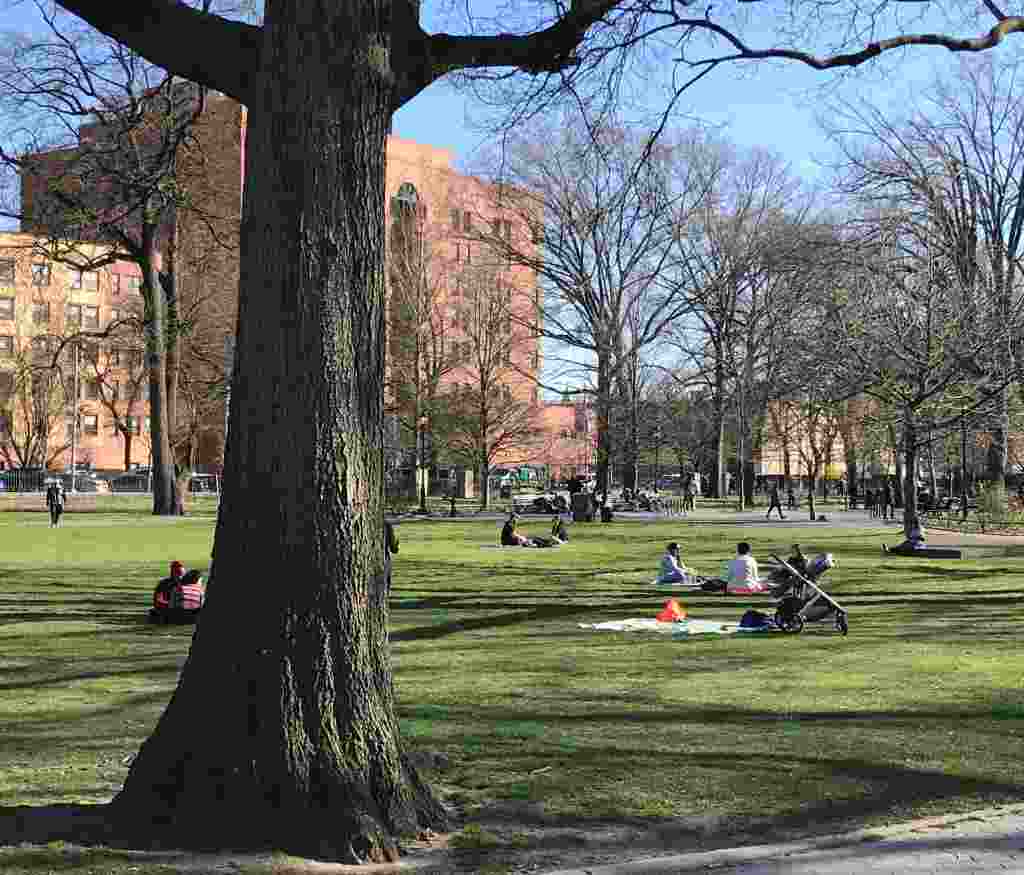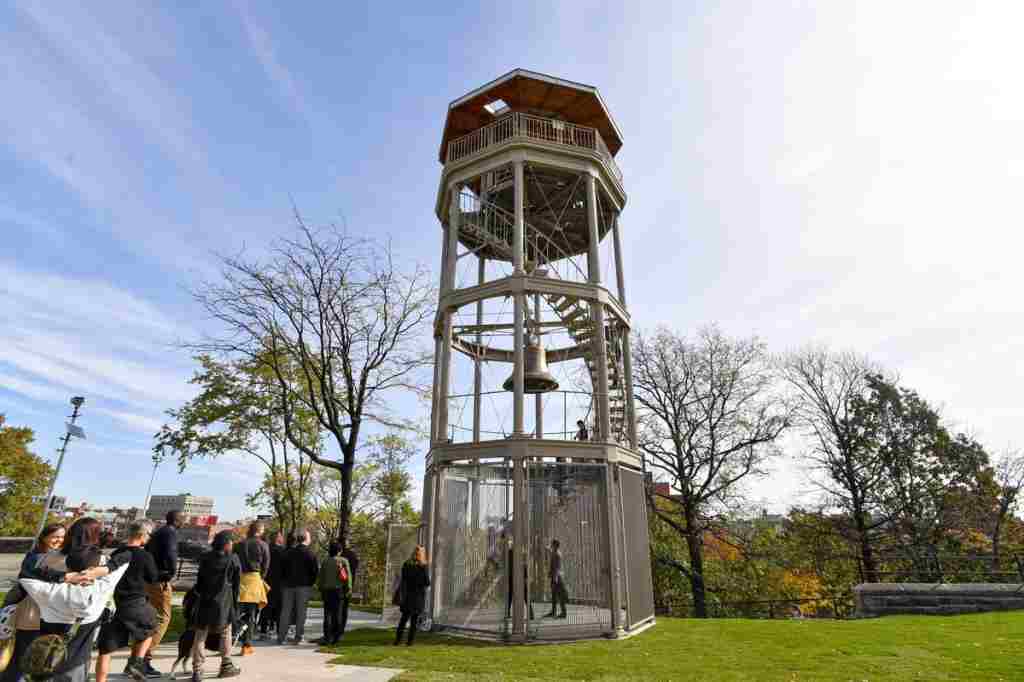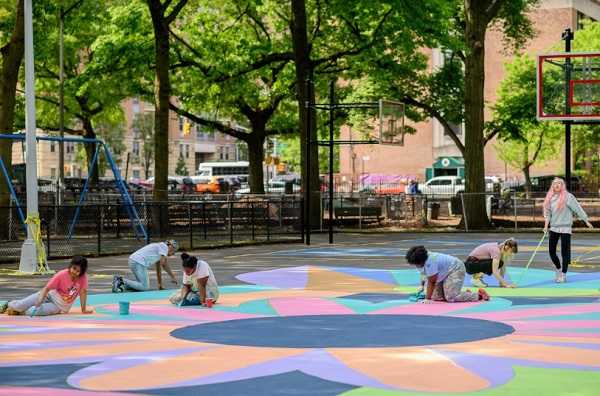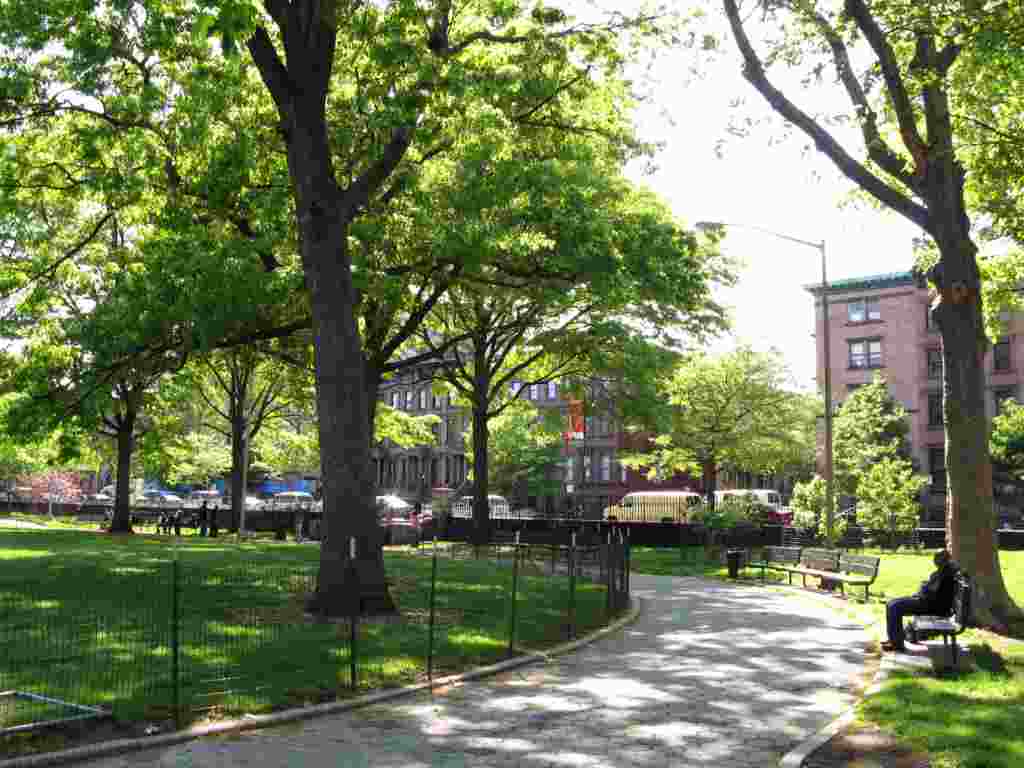Located on the border between Harlem and East Harlem, New York City, Marcus Garvey Park is a vibrant cultural hub and a testament to Marcus Garvey‘s legacy as a prominent figure in the black nationalist movement. Originally known as Mount Morris Park, the park was renamed in 1973 to honor Garvey, who advocated for the empowerment and liberation of black people worldwide.
It is a 20-acre park that offers you relaxation, recreation, and community gatherings while celebrating the rich heritage and artistic spirit of Harlem. Since the 1930s, the park has undergone improved construction. The then Park commissioner, Robert Moses, and the Federal Works Progress Administration installed the terraces, stairs, playgrounds, and a system of stone walls.
Become an insider. Subscribe to our newsletter for more top trending stories like this!
People Also Read: Black Culture: 10 Interesting Facts About Harriet Tubman
8 Facts About Marcus Garvey Park You Should Know
1. Marcus Garvey Park Was Formerly Called Mount Morris Park

Formerly named Mount Morris Park, Marcus Garvey Park is centered on a massive and steep outcropping of metamorphic rock. There are flat lawns and playing fields surrounding the park, and the entire complex interrupts Fifth Avenue traffic circling Mount Morris Park West.
The park is operated by the NYC Department of Parks and Recreation and borders 120th Street and 124th Street on the west and Madison Avenue on the east.
2. Local Citizens Successfully Petitioned to Preserve the Space as a Public Park
Due to its reptile population, early Dutch settlers called Marcus Garvey Park “Slangberg,” or Snake Hill. Later, the British built fortifications on the site to guard the Harlem River during the Revolutionary War.
In 1835, the Common Council, a predecessor to today’s City Council, considered razing the hilly area to accommodate Fifth Avenue north of Central Park. However, local citizens successfully petitioned to preserve the space as a public park.
3. Marcus Garvey Park Officially Opened on December 1, 1840
Originally a race track for horses, Marcus Garvey Park sits on a 20-acre residential square carved from 173 acres of a farm owned by the Benson Family. It was officially opened on December 1, 1840, as “Mount Morris Square.”
People Also Read: 15 African American Inventors Who Made History
4. It Hosted the Harlem Cultural Festival–Black Woodstock, in 1969
Marcus Garvey Park has always prioritized music, with the Parks Department promoting performances in 1872 and 1893. By 1900, a refreshment booth had been built at the 120th Street and Madison Avenue entrances to the park.
In 1969, the park was the site of the Harlem Cultural Festival, a series of concerts known as “Black Woodstock.” No wonder the fantastic park’s amphitheater. The entire community is welcome to celebrate Juneteenth in the park.
5. The Marcus Garvey Park Was First Named After Robert Morris
When the park was opened to the public in 1840, it was named after the newly elected mayor, Robert Morris. In 1970, the Community Thing and other activist groups suggested naming the park after Marcus Mosiah Garvey (1887–1940), an early advocate of Black Nationalism and economic independence.
Marcus Garvey was also a publisher, journalist, entrepreneur, activist for black nationalism, and founder of the Universal Negro Improvement Association and African Communities League (UNIA-ACL).
The Community Thing also asked that a portion of the newly built recreation centre contain a Garvey Museum. The City Council officially renamed the park Marcus Garvey Memorial Park in 1973. This was during the same vote when “Welfare Island” was renamed Roosevelt Island.
Become an insider. Subscribe to our newsletter for more top trending stories like this!
Recently, the New York State Parks office, with two parks groups, submitted the nomination for the park to be named to the National Register of Historic Places.
People Also Read: The 5 Black History Museums Across the US You Should Visit
6. The Marcus Garvey Park’s Landmark Is The Harlem Fire Watchtower

In 1855–57, Julius H. Kroehl designed and constructed the Harlem Fire Watchtower from cast iron. It was equipped with a 10,000-pound bell cast by Jones & Hitchcock. The watchtower allowed observers to use the natural elevation of the park and the added height of the structure to search for fires. This was in an era when most buildings were made of wood.
The 47-foot cast-iron tower is the only survivor of the eleven constructed in the city and was designated a landmark in 1967. The watchtower, still bearing its bell, is located in the center of the park on an artificial plateau called the Acropolis.
7. The Marcus Garvey Park Has Various Recreational Facilities
Facilities in the park include the Pelham Fritz Recreation Center and the Richard Rogers Amphitheater. There is also a swimming pool (open in summer) and two playgrounds designed for infants, teens and children with disabilities, built-in 1993. Since then, it has given the neighborhood’s youngest members hours of pure fun.
During summer days families can enjoy the park’s slides, fountains, and drawbridges, while others swim in the outdoor pool on warm evenings.
The Little League baseball field occupies the southwest corner of the park. Also, the park’s amphitheatre is situated on the west side of the park at 122nd Street. This amphitheater has become home to the Classical Theatre of Harlem. Suppose you want to walk your pet; there is a dog run on the Southeast corner of the park.

8. The Marcus Garvey Park Promotes Horticulture Programming
In March of 2023, the New York Junior League pledged two structures for the park, enabling it to cultivate its plants and do the same for other historic Harlem parks. This site will allow for free public horticulture programming like workshops, demonstrations, author talks, and arts horticulture events, among others.
The Horticulture program brings on partners like Green Thumb, Partnerships for Parks, Harlem Grown, the City Gardens Club, and the Horticultural Society. It will also offer a place for the uptown gardening community, such as Green Thumb gardeners, to have a central meet-up site and a place for volunteers to meet.
The Bottom Line
Marcus Garvey Park is notable for its cultural significance as well as its beautiful scenery and leisure facilities. There are a lot of lush green lawns available for you and your family to use for picnicking, sunbathing, or just taking in the natural beauty of the park. Basketball courts, baseball diamonds, and playgrounds are available for sports enthusiasts, encouraging people of all ages to lead active lifestyles.
Spotcovery offers unique and fresh daily content on Black culture, lifestyle, and experiences. We talk about everything black, black people, black-owned and black-owned businesses. We also deliver authentic and relevant content that will inform, inspire and empower you! The future of black media is a critical piece of the black experience of today! Our primary audience includes African American, African, Afro-Caribbean and people of African heritage. Black culture is for the culture!
Become an insider. Subscribe to our newsletter for more top trending stories like this!





